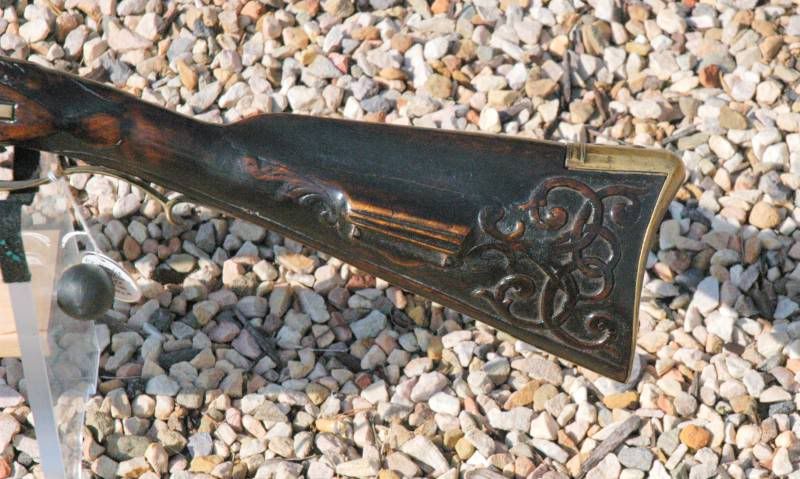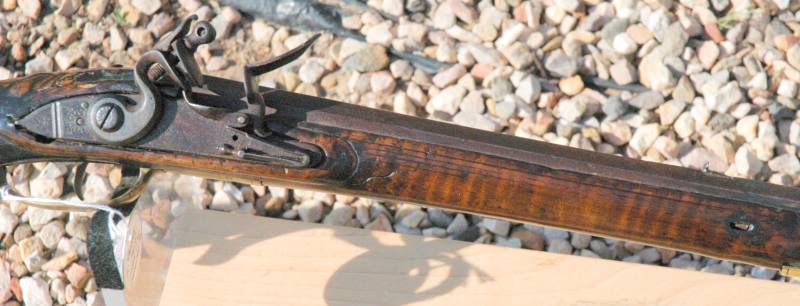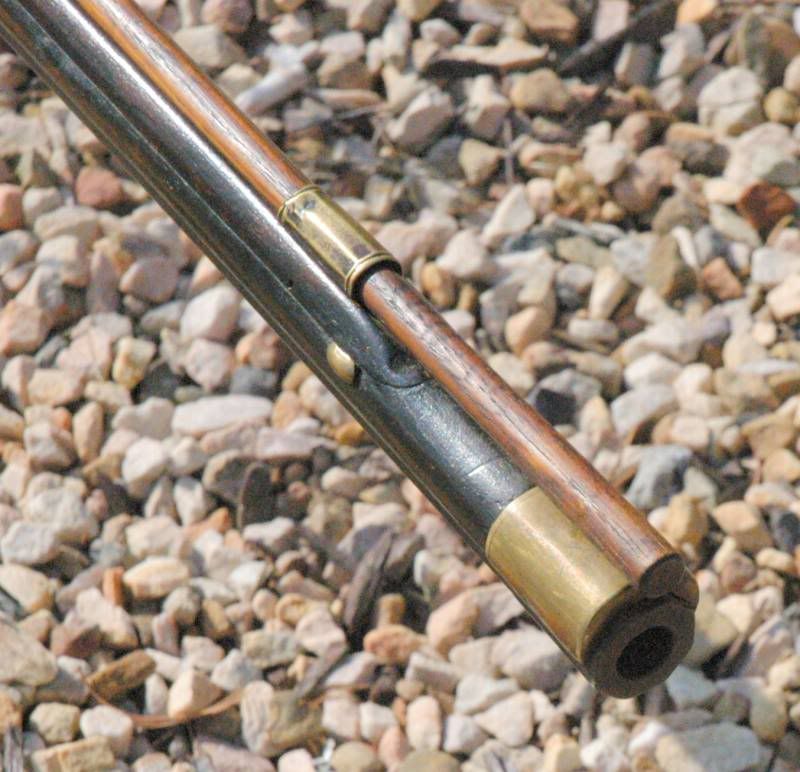This attribution was made by Wester A White, one of the most knowledgeable men on Rev War arms. (James Whisker)
Contributed by Dr. Whisker:
Here is accurate information on Fainot
Note that there is a record of his emigration, came to Canada first
and then from his wife's burial record his subsequent removal to NYC
Canadian immigration record gives date of birth
it is quite common to have several dates in conflict in these old records
the attribution of the Fainot gun, first shown in my Lancaster Co Gunsmith book, was made by the late Wester A White
I have never seen or heard of another--unusual since he had a long working period
we refer to the carving as the "Gordian knot" which Mr White thought unique to Fainot's work
I worked very closely w/ Mr White on my Lancaster Co book
George Frederick Fainot (1728 -1817). gunsmith. George Frederick Fainot was born in Seloncour, France, on 28 August 1728. He emigrated to Halifax, Nova Scotia, Canada, in 1752. From 1765 through 1770 he worked in New York, according to his wife's burial entry. In 1770 he moved to Lancaster. [Moravian Burial Book, no. 622]. From 1775 through 1817 [he was also listed on the tax roll of 1818, the year after he died] he maintained a shop on N. Queen St., Lancaster city. [tax; 3 Pa Arch 17 at 605 & 756]. He died on 23 December 1817. The appraisal of Fainot's estate was made on 13 January 1818. The contents were mostly household goods. The small number of gunshop items suggests that Fainot had retired from his trade earlier.
a small engine, $1
an old lock and sundries, £4
an old bench and sundries, £4
brass mortar and pestel, $1
lot of files, £4
[another] lot of files and sundries, £4
[another] machine, £4













Comments:
This is a great rifle; the museum is again fortunate to get a gun of this importance and quality. Fanot's early Lancaster work is unique, probably due to his French training. While a Lancaster gun, it cannot be said to be representative of the Lancaster School. The gun is in great condition, fully carved with an intriguing pattern on the butt, and a two piece enclosed/trapped lid type patchbox most often seen on Carolina and Kentucky guns. This is a great example of a significant early maker's work, and important in showing how being trained in France with French Canadian influences translates to a later American long arm.
===============================================================
This is one of the great third quarter 1700s rifles still extant and we are indeed fortunate to have it brought forward for the Library. There are few as fine as this rifle with its rich carving, metal work and engraving. There are elements of this gun that reflect the Easton, Northampton and Christian springs styles in the fully enclosed side opening patchbox with the ends swept out to the butt and toe plates. The gadroon lines ahead of the lock and upper molding line are also found on rifles in that area. Wonder if he spent some time in the north before he settled in Lancaster? It also appears that the forearm may have been replaced; not at all unusual for a gun that old, if so.

